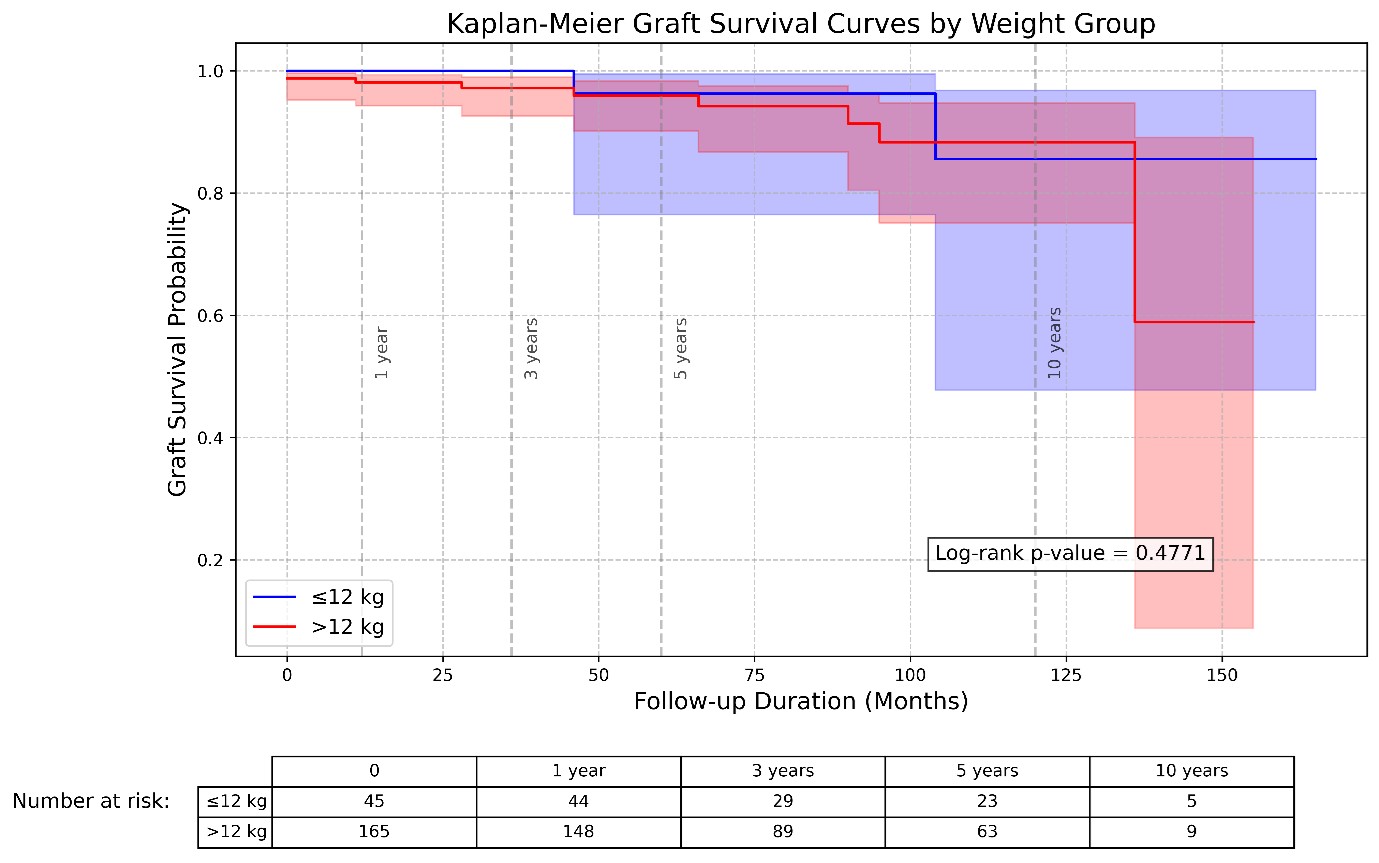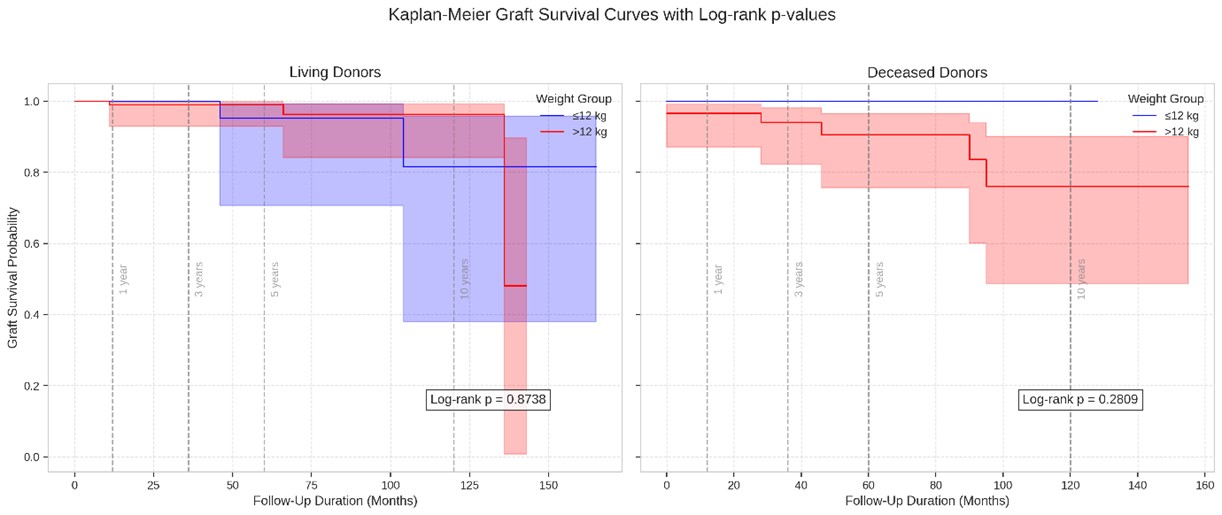Head Section: Pediatric Transplant Nephrologist
Pediatric kidney transplant section
King Fahad Specialist Hospital-Dammam
Breaking the weight boundaries: Exceptional kidney transplant outcomes in children <12 kg and <10 kg. Center experience
Ahmad Azzam1, Mansour Tawfik1, Heba BAhbah1, Mahmoud Obeid1, Mohammad Al MAghrabi1, Rashid Ellidir1, AbdulAziz Bamerrez1, Ammar Hamed1, Al Anoud Al Shami1.
1Multi Organ Transplant Center, King Fahad Specialist Hospital, Dammam, Saudi Arabia
Introduction: Kidney transplantation represents the most effective treatment for pediatric patients with end-stage renal disease (ESRD), as it significantly enhances both survival rates and quality of life compared to dialysis. Nevertheless, the procedure presents distinct challenges, particularly for younger and smaller children.
Historically, studies have suggested that children weighing <15 kg may face increased perioperative risks, challenges in donor-recipient size matching, and a greater likelihood of complications compared to children > 15 kg. In this study, we aimed to rigorously evaluate the immediate and long-term outcomes of kidney transplantation in high-risk pediatric cohort weighing < 12 kg by comparing them with recipients weighing >12 kg.
Patients and Methods: In this study, we retrospectively analyzed the data of 210 pediatric kidney transplant recipients (pKTR) over a 16-year period to compare the outcomes between those weighing ≤12 kg (n=45) and >12 kg (n=165) at the time of transplantation. Baseline characteristics were compared between the two groups. Kaplan-Meier survival analysis was used to assess graft and patients survival stratified by donor type (living vs. deceased). Estimated glomerular filtration rates (eGFR) were compared at 1, 3, and 5 years and at the last follow-up.
The graft survival rates were similar between the groups at 1, 3, 5, and 10 years post-transplantation (P=0.4771). Stratified analysis according to donor type showed no significant differences in graft survival. eGFR was comparable between the groups at all time points. Subgroup analysis of recipients weighing ≤10 kg (n=21) vs. >10 kg (n=189) also demonstrated no significant differences in graft survival (P=0.717) or other outcomes. Patient survival at 10 years was excellent in both the ≤12 kg (93.5%) and >12 kg (95.3%) groups (P =0.3990). These findings suggest that kidney transplantation in children < 12 kg can achieve excellent outcomes comparable to those in > 12 kg , challenging previous assumptions about the increased risks in this population.


Conclusion: The findings challenge the conventional belief of increased risk in smaller pediatric patients, highlighting that kidney transplantation, when performed in centers with substantial experience and rigorous protocols, can achieve outcomes in small children that are comparable to those in larger pediatric recipients.
Lectures by Alanoud Alshami
| When | Session | Talk Title | Room |
|---|---|---|---|
|
Fri-19 07:00 - 07:50 |
Understanding rejection in pediatric kidney transplant | Utility of De Novo Donor-Specific Antibody-Driven Protocol Kidney Biopsy in Pediatric Kidney Transplantaion | MOA 5 |
|
Sat-20 15:30 - 16:30 |
Important recipient considerations in pediatric kidney | Breaking the Weight Boundaries: : Exceptional Kidney Transplant Outcomes in Children <12 kg and <10 kg. Center Experience | MOA 5 |
|
Thu-18 17:00 - 18:00 |
Kidney Posters - from P1.1 to P1.32 | Bridging the gap: Navigating donor-recipient size mismatch in pediatric renal transplants | MOA 10 (Exhibit Area) |
